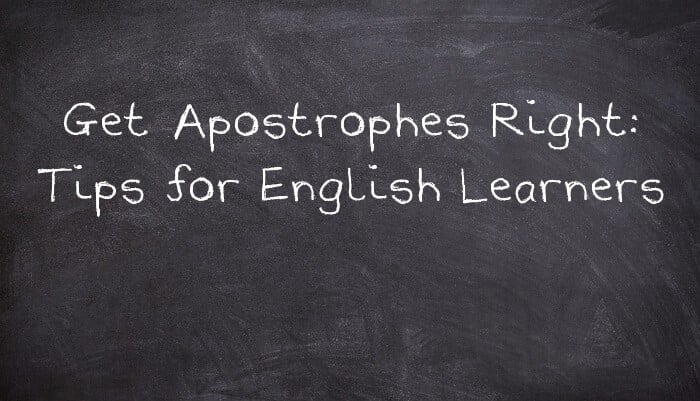One of the most frequent errors made by native speakers is with the apostrophe. Apostrophes are either put in words where they are not needed, or omitted when they should be used. Is the use of the apostrophe so complicated?
The apostrophe has two basic uses- it shows that letters are missing- aren't, can't, etc, and it shows possession- John's sister. Apostrophes are not used to show that a noun is plural.
We do not, of course, use punctuation in speech, so contractions and possessives do not cause any problems in speech. Writing is a different matter. Both native speakers and ESL speakers often have problems with things like apostrophe placement. Apostrophes are not used (except for misuse) in possessive pronouns. Thus, with their, theirs, his, her, hers, your, yours and its no apostrophe should ever be used. Ever.
- Right: It's your turn.
- Wrong: It's you're turn.
- Wrong: Its your turn.
- Wrong: Its you're turn.
The first sentence is "short" for: "It is time for the turn that belongs to you." (It can be clearly seen why people prefer the shorter sentence.)
So, when do we use Apostrophes?
There are two basic uses of the apostrophe in English:
1 - To show that letters or numbers are missing
In contractions, we use an apostrophe to indicate that a letter is missing:
- Isn't = is not
- '72 = 1972
2 - To show possession
If something belongs to a person or thing, we use an apostrophe to show ownership:
- Jane's house is in a nice area. (The house belongs to Jane)
We put the apostrophe after the letter s in a plural:
- The girls' mother collected them from school. (There were two or more girls)
NB: With irregular plurals, we put the apostrophe before the letter s:
- The children's teacher was very popular.
The Apostrophe with Plurals
We very rarely use the apostrophe to show plurals and only under special circumstances:
- Some people use them with acronyms (words made from the first letters of a phrase, like CD for Compact Disc)- CD's. Others do not use the apostrophe here.
- Numbers- Some people write the 1990's and others write the 1990s.
- To make a letter plural- mind your p's and q's (an expression meaning 'mind your manners')
Other than these circumstances, the apostrophe should not be used in plurals unless they are showing possession.
The Grocer's Apostrophe
The so-called grocer's apostrophe, where it is used incorrectly in plurals, is one of the most common mistakes made by native speakers in English. Why is it that something so simple causes so many problem? The apostrophe only has two functions, yet it seems that many people leave school with little or no idea of either of them.
Apples and Orange's
I saw the above example in a market in Soho, London, and wondered what on earth possessed the stall holder to put the apostrophe in one fruit, but not in the other. Maybe they thought that imported or citrus fruits require an apostrophe. If they had done it in both, at least his error would have shown consistency.
Not teaching native speakers, I don't see this error as much in my students' work. Why is it that foreign learners seem to handle this better than many NESs?
